Research Article Open Access
Effects of Borax and Sleeve Gastrectomy on mRNA Expression of Antioxidant Genes in Substantia Nigra Tissue of Obese Rats
| Inan Gezgin1*, Cem Ozic2, Abidin Murat Geyik3, Can Hakan Yildirim1, Yusuf Ehi4, Miktat Kaya1 and Filiz Susuz Alanyal�?±5 | |
| 1Department of Neurosurgery, Kafkas University Faculty of Medicine, Kars, Turkey | |
| 2Department of Bioengineering, Kafkas University Engineering & Architecture Faculty, Kars, Turkey | |
| 3Department of Neurosurgery, Gaziantep University Faculty of Medicine, Gaziantep, Turkey | |
| 4Department of Neurology, Kafkas University Faculty of Medicine, Kars, Turkey | |
| 5Department of Biology, Anadolu University, Faculty of Science, Eskisehir, Turkey | |
| Corresponding Author : | Inan Gezgin Department of Neurosurgery Kafkas University Faculty of Medicine 36100, Kars, Turkey Tel: 904742251150 Fax: 904742251196 E-mail: drigezgin1978@hotmail.com |
| Received February 04, 2016; Accepted Februray 26, 2016; Published February 29, 2016 | |
| Citation: Gezgin I, Ozic C, Geyik AM, Yildirim CH, Ehi Y et al. (2016) Effects of Borax and Sleeve Gastrectomy on mRNA Expression of Antioxidant Genes in Substantia Nigra Tissue of Obese Rats. J Obes Weight Loss Ther 6:302.doi:10.4172/2165-7904.1000302 | |
| Copyright: © 2016 Gezgin I, et al. This is an open-access article distributed under the terms of the Creative Commons Attribution License, which permits unrestricted use, distribution, and reproduction in any medium, provided the original author and source are credited. | |
Visit for more related articles at Journal of Obesity & Weight Loss Therapy
Abstract
Aim: To evaluate the effects of borax and sleeve gastrectomy on mRNA expression of antioxidant genes in substantia nigra tissue of obese rats. Methods: Obese rats were fed with a high-fat diet containing 40% additional fat to the diet. Rats were allocated into four groups in random, which were normal rats (Group I) (n=14), obese rats subjected to SG (Group II) (n=14), obese rats subjected to borax (Group III) (n=14), and obese rats subjected to SG and borax (Group IV) (n=14). Catalase, superoxide dismutase (SOD) and glutathione S-transferase (GST) gene expressions were determined by polymerase chain reaction, real-time polymerase chain reaction (RT-qPCR) and western blotting. Results: When normal rats (Group I), and obese rats subjected to SG (Group II) were compared, a decrease in expressions of catalase, SOD and GST genes was observed in Group II. When obese rats subjected to borax (Group III) were compared with Group I and Group II, a decrease in expressions of catalase, SOD and GST genes was observed in Group III. This phenomenon demonstrates that borax and SG both decrease expressions of catalase, SOD and GST genes. Furthermore, the most significant decrease in expressions of catalase, SOD and GST genes was observed in obese rats subjected to SG and borax (Group IV) when compared to other three study groups. Conclusion: The borax decreases molecular obesity and consequently increases the expressions of Catalase, SOD and GST genes. These data show decrease of Catalase, SOD and GST genes in the substantia nigra tissue of obese rats, consistent with the possibility that these changes may contribute to disease pathogenesis.
| Keywords |
| Borax; Obesity; Sleeve gastrectomy; Substansia nigra. |
| Introduction |
| Obesity is blamed for over 2.8 million annual deaths all over the world with increasing prevalence of related comorbidities, including metabolic (e.g. diabetes mellitus, hyperlipidemia, hypertension) and non-metabolic disorders (e.g., cancer, stroke, depression, polycystic ovary syndrome, fat liver disease, glomerulopathy, bone fragility etc.) [1,2]. Fontaine et al. revealed that a 25-year-old obese patient has a 22% decrease in life expectation [3]. Adams et al. revealed that compared with cases who were nonsmokers and had no pre-existing illnesses; there was a 20 2- to 3-fold greater risk of death among obese individuals [4]. |
| Sleeve gastrectomy (SG) is a restrictive procedure that not only results in lasting weight loss but also improves insulin sensitivity and glucose tolerance before any significant weight loss has arised [5]. However, it is unclear whether SG has affects in the central nervous system. |
| Boron is an essential element well-known to control a number of metabolic and physiological systems. In nature, boron does not exist by itself and combines to form boric acid. Borax (a salt of boric acid) has a role in the action of enzymes in animal biological systems and interacts with a number of micronutrients, steroid hormones, and plasma lipids [6,7]. Even though the precise role of boron has not been exactly revealed, nutritional intake in human was shown to activate numerous significant inflammatory modifications. Yet, there are still contradictory outcomes on metabolic outcomes both in humans and animals [8,9]. Kucukkurt et al. revealed that borax is able to scavenge free oxygen radicals [10]. Besides they revealed that oral supplementation with boron caused reduction of insulin in adipose tissue and a decrease in sensitivity of adipose tissue to insulin [10]. Boron limits oxidative damage by enhancing the body’s store of glutathione and its derivates, or by inducing other reactive oxygen species neutralizing agents [11]. |
| The aim of the present study was to evaluate the effects of borax and SG on mRNA expression of Catalase, superoxide dismutase (SOD) and glutathione S-transferase (GST) genes in substantia nigra tissue of obese rats. |
| Materials and Methods |
| Experimental design: All animal studies were carried out with the approval of the Institutional Animal Care and Use Committee. Animals were housed at constant temperature (20-22°C) and humidity (50-60%) with a 12-h light and 12-h dark cycle. They were allowed free access to water and standard rat chow. Rats were allocated into four groups in random, which were normal rats (Group I) (n=14), obese rats subjected to SG (Group II) (n=14), obese rats subjected to borax (Group III) (n=14), and obese rats subjected to SG and borax (Group IV) (n=14). Obese rats were fed with a high-fat diet containing 40% additional fat to the diet. One of the limitations of this study is the short follow up of 8 weeks and of monitor the body weight change with borax (Graph 1). |
| Surgical (sleeve gastrectomy) procedure: After overnight fasting, rats in the sleeve group were anesthetized with an intraperitoneal injection of 302 mg/kg chloral hydrate and placed in a supine position on a surgical board with the extremities immobilized. A sinister epigastric incision was used for the operation. The length was about 1.5-2 cm in total. The incision was kept open with a blade retractor and dissociates gastric omentum to disclose gastric cardium. The gastric cavity was closed with vascular clamps, and then gastric cavity and hemostating were cut off with a cauterizer. A gastric tube was created with 8-0 unabsorbable suture from the distal antrum (1.5-2 mm from the pylorus) to the Hiss angle. The fundus was completely removed (70- 80% of total stomach). After the gastric tube was rebuilt, the peritoneal cavity was cleaned with saline, and then closed with 6-0 silk suture. |
| Application of Borax: For Group III and IV, 1 mg/L of boric acid was added in their drinking water. |
| PCR and RT-qPCR analysis: Total RNA was isolated from cultured cells by using TRIzol reagent (Sigma Chemical Co., St. Louis, MO, USA). Total RNA was isolated from exponentially substantia nigra tissues TRIzol Reagent (Sigma Chemical Co., St. Louis, MO, USA). Total RNA was treated with RQ1 DNAse I (Promega, Madison, WI, USA). RT was performed according to the manufacturer’s directions (Fermentas, Vilnius, Lithuania) using 1 unit of MMLV reverse transcriptase with 5 μg of total RNA and oligo dT22 primer. Similar amplification efficiencies of all gene targets and GAPDH were validated, permitting quantitative measurement of gene expression. |
| PCR gene expression of Catalase, SOD and GST were quantified using MyGenie96 Thermo BÄ°ONER PCR. The 25 μl PCR mixture contained were performed using 1 μL of cDNA template, 0.25 μL (5u/ μL) of Taq polymerase, 2.5 μL (100 ng) of primers, 1.5 μL (25 mM) dNTP, 2.5 μL 10× PCR buffer and 1.5 μL MgCl2. PCR reactions were performed: 94°C for 3 minutes, 30 cycles at 94°C for 45 seconds, 50-60°C for 45 seconds, and 72°C for 1 minutes, followed by a final extension at 72°C for 10 minutes. |
| Real-time PCR gene expression of Catalase, SOD and GST were quantified using the Roche Light Cycler real-time PCR analyzer according to the manufacturer’s instructions (Roche Molecular Diagnostics, Mannheim, Germany). The 25 μl PCR mixture contained 12.5 μl of SYBR Green Universal PCR Master Mix (Perkin-Elmer Applied Biosystems, California, USA) 500 nmol/l of primers (forward and reverse), 100 nmol/l of labeled probe, and 1 μl of cDNA template. PCR was performed at 50°C for 2 min, 95°C for 10 min, and then run for 50 cycles at 95°C for 15 s and 60°C for 1 min. |
| Western Blotting |
| Protein precipitation with an ammonium sulfate is useful for purification of a total protein. Expression of the total protein was induced by the addition of 100 μM isopropyl β-D-thiogalactopyranoside and incubation was continued for a further 3 h at 37°C. Analysis of the purified proteins on 10% sodium dodecyl sulfate-polyacrylamide gel electrophoresis was carried out with Coomassie brilliant blue staining. Proteins were transferred from the gel to a polyvinylidene fluoride filter (PVDF). For western blotting, the ProteoQwest colorimetric kit with TMB substrate was used with mouse monoclonal antibody and HRPconjugated secondary antimouse antibody. Kaleidoscope pre-stained standards were used as molecular-mass markers. |
| Results |
| Within the context of this study, when normal rats (Group I), and obese rats subjected to SG (Group II) were compared, a decrease in expressions of Catalase, SOD and GST genes was observed in obese rats subjected to SG (Figures 1a-1d). When obese rats subjected to borax (Group III) were compared with both normal rats (Group I) and obese rats subjected to SG (Group II), a decrease in expressions of Catalase, SOD and GST genes was observed in obese rats subjected to borax (Figure 2a and 2b). This phenomenon demonstrates that borax and SG both decrease expressions of Catalase, SOD and GST genes. Furthermore, the most significant decrease in expressions of Catalase, SOD and GST genes was observed in obese rats subjected to SG and borax (Group IV) when compared to other three study groups (Figure 2c and 2d). |
| When groups were compared regarding genes, decreases in the expressions of Catalase, SOD and GST were observed secondary to obesity. When real-time PCR analysis was performed with the intention to quantitatively control the expressions of genes, decrease in Catalase, SOD and GST gene expressions was determined (Table 1). |
| Discussion |
| Here we aimed to reveal the effects of borax and sleeve gastrectomy on mRNA expression of antioxidant genes in substantia nigra tissue of obese rats. Our results showed that the most significant decrease in expressions of catalase, SOD and GST genes was observed in obese rats subjected to SG and borax, followed by obese rats subjected to borax, and obese rats subjected to SG. |
| Obesity is defined by a substandard inflammatory status, generating its consequences on numerous organs. Earlier literatures have found that weight loss is related with a decrease in inflammation markers (e.g. C-reactive protein) and pro-inflammatory cytokines (e.g. interleukin-6 and tumor necrosis factor) [12,13]. Oxidative stress results from an inequality concerning the total antioxidant defense of the tissue and the reactive species generated. The upsurge in fat-derived reactive oxygen species during the development of obesity to be the key contributory factor of the abnormal arrangement and reduced expression of adipose tissue antioxidative enzymes [14]. The pro-inflammatory effect of obesity and the associated insulin resistance both take role in an exaggerated inflammatory reaction [15]. |
| Bariatric surgery is currently the most noteworthy management of significant and sustained body weight loss in morbidly obese patients [16,17]. Hasani et al. showed that observed a significant difference for REE between obese patients after the surgery and controls as well as between prior-and post-surgery [18]. Recent evidence suggests that SG leads to a decreased food intake not only by mechanical restriction of the stomach but also by reducing a subject’s appetite [19]. SG is supposed to modulate meal-related hormones of the gut-brain axis such as Ghrelin (signal = hunger) or peptide YY (slows gastric emptying) or GLP-1 (decreases food intake) [20]. In the present study, when normal rats, and obese rats subjected to SG were compared, a decrease in expressions of catalase, SOD and GST genes was observed in obese rats subjected to SG. |
| Boron has been shown to support the antioxidant defenses of tissue in animals and plants, via a unknown system that affects oxidative metabolism [21,22]. Garcia-Gonzalez et al. revealed that boron deficit increases the level of SOD, catalase, and peroxidase in heterocysts in the filamentous cyanobacterium Anabaena PCC 7119 [23]. Turkez et al. showed that, low dose boron increases while high dose boron decreases both SOD and catalase activities in erythrocytes [24]. Pawa et al. administered borax orally to rats for three days followed by thioacetamide administration [25]. They showed that borax balanced the harmful effects of thioacetamide by modifying oxidative stress parameters and revealed that borax may keep oxidant/antioxidant balance. Oxidative stress shows up when antioxidant levels are decreased. Thus, antioxidant enzyme activities are essential in cell defense [26,27]. Inconsistent results regarding the effect of boron on body weight were showed in animal studies. Although the supplementation of boron reported to cause weight gain in some studies [6,9], conflicting results were also reported [8,10]. These results are believed to be the results of heterogeneity in type and dosage of the boron compound and duration of the exposure. In the present study, when obese rats subjected to borax were compared with both normal rats and obese rats subjected to SG, a decrease in expressions of Catalase, SOD and GST genes was observed in obese rats subjected to borax. Furthermore, the most significant decrease in expressions of Catalase, SOD and GST genes was observed in obese rats subjected to SG and borax when compared to other three study groups. |
| One of the limitations of this study is the short follow up of 8 weeks. However, this time period is the equivalent of 6 human years [28,29]. While we cannot exclude the potential for weight regain following sleeve gastrectomy, other investigators have demonstrated that weight loss is maintained at a 15-week time point following sleeve gastrectomy in rodents [30,31]. Although we still consider our results as preliminary, they warrant a larger comprehensive study, one which would include more rats in order to evaluate more precisely the role of antioxidant genes in obesity pathogenesis. |
| Conclusion |
| In conclusion, the authors showed decrease in expressions of Catalase, SOD and GST genes in substantia nigra tissue of obese rats, which may contribute to disease pathogenesis for the first time in the English literature. The borax decreases molecular obesity and consequently increases the expressions of Catalase, SOD and GST genes. We revealed that borax decreases molecular obesity and consequently increases expressions of Catalase, SOD and GST genes. |
References
- Atella V, Kopinska J, Medea G, Belotti F, Tosti V, et al. (2015) Excess body weight increases the burden of age-associated chronic diseases and their associated health care expenditures. Aging (Albany NY) 7:882-892
- Must A, Spadano J, Coakley EH, Field AE, Colditz G, et al. (1999)The disease burden associated with overweight and obesity. JAMA 282: 1523-1529
- Fontaine KR, Redden DT, Wang C, Westfall AO, Allison DB (2003) Years of life lost due to obesity. JAMA 289: 187-193.
- Adams KF, Schatzkin A, Harris TB, Kipnis V, Mouw Tet al. (2006) Overweight, obesity, and mortality in a large prospective cohort of persons 50 to 71 years old. N Engl J Med 355:763-778.
- Peterli R, Wölnerhanssen B, Peters T, Devaux N, Kern B, et al. (2009) Improvement in glucose metabolism after bariatric surgery: comparison of laparoscopic Roux-en-Y gastric bypass and laparoscopic sleeve gastrectomy: a prospective randomized trial. Ann Surg 250:234-241.
- Hunt CD (1998) Regulation of enzymatic activity: one possible role of dietary boron in higher animals and humans.Biol Trace Elem Res 66: 205-225.
- Devirian TA, Volpe SL (2003) The physiological effects of dietary boron.Crit Rev Food SciNutr 43: 219-231.
- Aysan E, Sahin F, Telci D, Yalvac ME, Emre SH, et al. (2011) Body weight reducing effect of oral boric acid intake. Int J Med Sci 8: 653-658.
- Armstrong TA, Spears JW, Lloyd KE (2001) Inflammatory response, growth, and thyroid hormone concentrations are affected by long-term boron supplementation in gilts. J AnimSci 79: 1549-1556.
- Kucukkurt I, Akbel E, Karabag F, Ince S (2015) The effects of dietary boron compounds in supplemented diet on hormonal activity and some biochemical parameters in rats. ToxicolInd Health 31: 255-260.
- Hunt CD, Idso JP (1999) Dietary boron as a phsiological regulator of normal inflammatory response: a review and current research progress. J Trace Elem Exp Med 12:221-233
- Nicklas BJ, Ambrosius W, Messier SP, Miller GD, Penninx BW, et al. (2004) Diet-induced weight loss, exercise, and chronic inflammation in older, obese adults: a randomized controlled clinical trial. Am J ClinNutr 79: 544-551.
- Wasim M (2015) Obesity and Leanness Caused by Mutations in the Leptin Gene: Already 6 Pathogenic Mutations Reported in this Gene. J Obes Weight Loss Ther 5:276.
- Huang CJ, McAllister MJ, Slusher AL, Webb HE, Mock JT, et al. (2015) Obesity-Related Oxidative Stress: the Impact of Physical Activity and Diet Manipulation. Sports Med Open 1: 32.
- Amirkhizi F, Siassi F, Djalali M, Shahraki SH (2014) Impaired enzymatic antioxidant defense in erythrocytes of women with general and abdominal obesity. Obes Res ClinPract 8: e26-34.
- Fenske WK, Dubb S, Bueter M, Seyfried F, Patel K, et al. (2013) Effect of bariatric surgery-induced weight loss on renal and systemic inflammation and blood pressure: a 12-month prospective study. SurgObesRelat Dis 9:559-568
- Stefater MA, Pérez-Tilve D, Chambers AP, Wilson-Pérez HE, Sandoval DA, et al. (2010) Sleeve gastrectomy induces loss of weight and fat mass in obese rats, but does not affect leptin sensitivity. Gastroenterology 138:2426-2436.
- Hasani M, Mirahmadian M, Taheri E, Qorbani M, Talebpour M, et al. (2015) The Effect of Laparoscopic Gastric Plication Surgery on Body Composition, Resting Energy Expenditure, Thyroid Hormones and Physical Activity in Morbidly Obese Patients. J Obes Weight Loss Ther5:275.
- Dimitriadis E, Daskalakis M, Kampa M, Peppe A, Papadakis JA, et al. (2013) Alterations in gut hormones after laparoscopic sleeve gastrectomy: a prospective clinical and laboratory investigational study. Ann Surg 257:647-754.
- Basso N, Capoccia D, Rizzello M, Abbatini F, Mariani P, et al. (2011) First-phase insulin secretion, insulin sensitivity, ghrelin, GLP-1, and PYY changes 72 h after sleeve gastrectomy in obese diabetic patients: the gastric hypothesis. SurgEndosc 25:3540-50
- Kelly GS (1997) Boron: a review of its nutritional interactions and therapeutic uses. Altern Med Rev 2:48-56.
- Ince S, Kucukkurt I, Cigerci IH, FatihFidan A, Eryavuz A (2010) The effects of dietary boric acid and borax supplementation on lipid peroxidation, antioxidant activity and DNA damage in rats. J Trace Elem Med Biol 24: 161-164.
- Garcia-Gonzalez M, Mateo P, Bonilla I (1991) Boron requirement for envelope structure and function in Anabaena PCC7119 heterocysts. J Exp Bot 42:925-929.
- Türkez H, Geyikoğlu F, Tatar A, Keleş S, Ozkan A (2007) Effects of some boron compounds on peripheral human blood. Z Naturforsch C 62: 889-896.
- Pawa S, Ali S (2006) Boron ameliorates fulminant hepatic failure by counteracting the changes associated with the oxidative stress. ChemBiol Interact 160: 89-98.
- Scandalios JG (2005) Oxidative stress: molecular perception and transduction of signals triggering antioxidant gene defenses. Braz J Med Biol Res 38:995-1014
- Hasbahceci M, Cipe G, Kadioglu H, Aysan E, Muslumanoglu M (2013) Reverse relationship between blood boron level and body mass index in humans: does it matter for obesity? Biol Trace Elem Res 153: 141-144.
- Christou NV, Look D, Maclean LD (2006) Weight gain after short- and long-limb gastric bypass in patients followed for longer than 10 years. Ann Surg 244: 734-740.
- Gezgin I, Ozic C, Yildirim CH, Kilic K, Ehi Y, et al. (2016) Sleeve gastrectomy ameliorates mRNA expression of matrix metalloprotease I, III, V, IL-1a and IL-6 genes in substantianigra tissue of obese rats. J Obes Weight Loss Ther.
- Kotidis EV, Koliakos GG, Baltzopoulos VG, Ioannidis KN, Yovos JG, et al. (2006) Serum ghrelin, leptin and adiponectin levels before and after weight loss: comparison of three methods of treatment--a prospective study. ObesSurg 16: 1425-1432.
- Patrikakos P, Toutouzas KG, Perrea D, Menenakos E, Pantopoulou A, et al. (2009) A surgical rat model of sleeve gastrectomy with staple technique: long-term weight loss results. ObesSurg 19: 1586-1590.
Tables and Figures at a glance
| Table 1 |
Figures at a glance
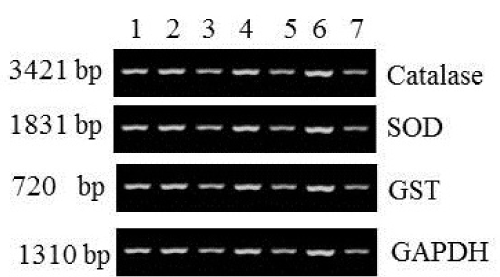 |
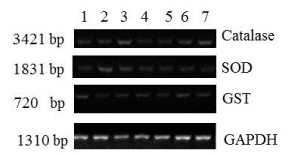 |
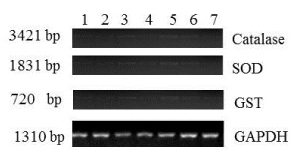 |
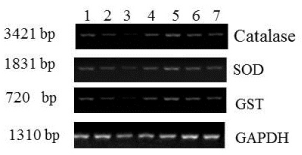 |
| Figure 1a | Figure 1b | Figure 1c | Figure 1d |
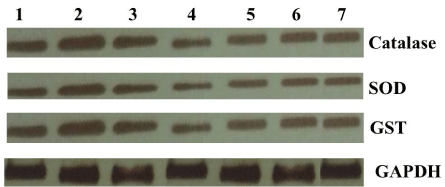 |
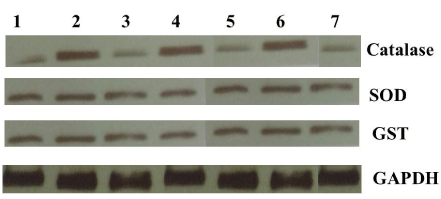 |
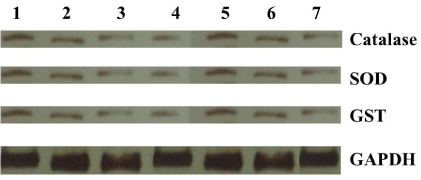 |
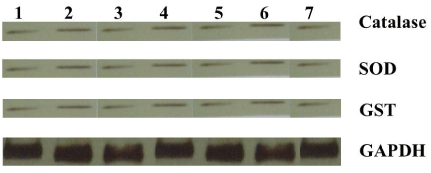 |
| Figure 2a | Figure 2b | Figure 2c | Figure 2d |
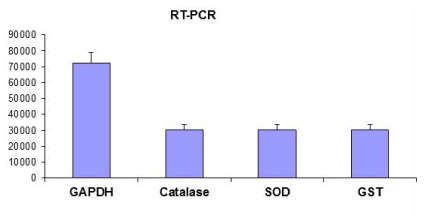 |
|||
| Graph 1 |
Relevant Topics
- Android Obesity
- Anti Obesity Medication
- Bariatric Surgery
- Best Ways to Lose Weight
- Body Mass Index (BMI)
- Child Obesity Statistics
- Comorbidities of Obesity
- Diabetes and Obesity
- Diabetic Diet
- Diet
- Etiology of Obesity
- Exogenous Obesity
- Fat Burning Foods
- Gastric By-pass Surgery
- Genetics of Obesity
- Global Obesity Statistics
- Gynoid Obesity
- Junk Food and Childhood Obesity
- Obesity
- Obesity and Cancer
- Obesity and Nutrition
- Obesity and Sleep Apnea
- Obesity Complications
- Obesity in Pregnancy
- Obesity in United States
- Visceral Obesity
- Weight Loss
- Weight Loss Clinics
- Weight Loss Supplements
- Weight Management Programs
Recommended Journals
Article Tools
Article Usage
- Total views: 11562
- [From(publication date):
April-2016 - Apr 03, 2025] - Breakdown by view type
- HTML page views : 10742
- PDF downloads : 820
